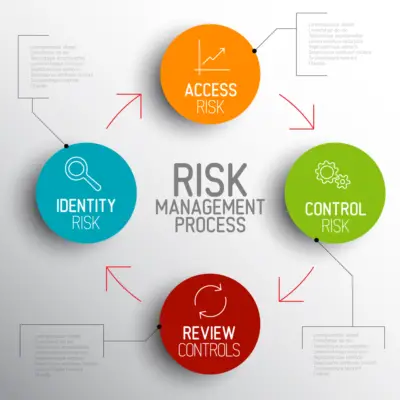Navigating the intricate landscape of the banking sector, characterized by frequently evolving regulations and guidelines, necessitates meticulous attention and precision. The following practices can be followed:-
- Conduct comprehensive risk assessments to identify all applicable compliance obligations (MetricStream)
- Establish a strong compliance culture and regular training to promote awareness of policies and regulations (PwC)
- Implement robust monitoring programs to test controls and identify control gaps (EY)
- Automate compliance workflows and reporting to improve efficiency and manage rapidly changing rules (Appian)
- Leverage data analytics to detect transaction patterns or behaviours that pose higher risks (Visualping)
- Establish clear accountability and oversight at the board and senior management levels (McKinsey)
- Conduct regular RCSAs to test controls and identify new/emerging risks (Thomson Reuters)
One may draw an analogy with a symphony orchestra, where musicians meticulously calibrate their instruments to contribute to a cohesive and harmonious melody.
In the realm of finance, regulatory compliance serves as this harmonizing force, ensuring that every financial institution adheres to established protocols to maintain stability and integrity.
This article aims to explore the critical importance of regulatory compliance, assessing its impact on both banking institutions and the senior management responsible for steering these entities.
It will also examine the role of regulatory authorities in orchestrating this complex symphony to foster a robust and thriving banking sector. Let us delve into this intricate exploration

The Role of Regulatory Compliance in the Banking Industry
Regulatory compliance plays a critical role in the banking industry as it ensures that banks adhere to the laws, regulations, and guidelines set by regulatory authorities.
By complying with these requirements, banks are able to maintain the stability and integrity of the financial system, protect consumers, and mitigate the risk of financial crimes such as money laundering and fraud.
Effective regulatory compliance practices are essential for fostering trust and confidence in the banking industry, promoting transparency, and upholding the overall stability of the financial ecosystem.
The Critical Role of Regulatory Compliance
The effective implementation of robust regulatory compliance measures plays a pivotal role in ensuring the integrity and stability of the banking industry. Regulatory compliance is critical in the banking sector as it helps banks adhere to the various laws and regulations imposed by regulatory bodies.
Here are some key points highlighting the critical role of regulatory compliance in the banking industry:
- Compliance teams and officers are responsible for ensuring that banks comply with regulatory obligations, such as anti-money laundering laws, data protection regulations, and consumer protection laws.
- Compliance activities involve conducting risk assessments, implementing policies and procedures, and monitoring and reporting any non-compliant activities.
- Regulatory compliance helps maintain the trust and confidence of customers, investors, and stakeholders in the banking industry.
- Effective compliance management ensures that banks operate within legal boundaries, mitigating the risk of penalties, reputational damage, and financial loss due to non-compliance.
Financial Institutions and Regulatory Requirements
Financial institutions play a crucial role in the economy and are subject to a wide range of regulatory requirements. These requirements are designed to ensure the stability and integrity of the financial system, protect consumers, and prevent illicit activities such as money laundering and tax evasion.
Understanding and complying with these regulatory requirements is essential for financial institutions to maintain their reputation, mitigate risks, and avoid legal and financial consequences.
Overview of Financial Institutions
An understanding of the regulatory landscape surrounding financial institutions is essential for effective compliance practices.
Financial institutions, such as banks, credit unions, and insurance companies, play a crucial role in the economy by providing various financial services to customers.
These organizations are subject to a range of regulatory requirements aimed at ensuring the stability and integrity of the financial sector. Compliance with these requirements is necessary to mitigate compliance risks and maintain public trust in the industry.
The compliance department within financial institutions is responsible for overseeing compliance operations and ensuring adherence to regulatory standards. Key areas of focus for compliance in banking include anti-money laundering measures, consumer protection, data privacy, and risk management.
Key Regulatory Requirements Facing Banks
To effectively comply with banking regulations, financial institutions must adhere to key regulatory requirements. Compliance regulations are set by regulatory authorities to ensure the stability and integrity of the financial industry.
Financial institutions must establish a robust compliance process to meet these requirements and maintain regulatory compliance. This involves implementing effective risk management practices to identify and mitigate inherent risks in their operations.
The approach to compliance should be comprehensive, encompassing all aspects of the institution’s activities. Compliance efforts should be focused on understanding and addressing regulatory risks specific to the financial industry.
Regulatory bodies play a crucial role in overseeing and enforcing compliance with these requirements, ensuring that financial institutions operate in a manner that protects both the institution and its customers.
Money Laundering, Tax Evasion, and Other Risks
In the realm of banking regulatory compliance, financial institutions face significant risks related to money laundering, tax evasion, and other illicit activities.
These activities pose serious compliance risks for financial institutions, as they can lead to reputational damage, financial penalties, and legal consequences.
To effectively address these risks, financial institutions must adhere to stringent regulatory standards and implement robust compliance controls.
Compliance monitoring plays a crucial role in identifying and mitigating potential instances of money laundering, tax evasion, and other financial crimes.
Additionally, financial institutions must manage operational risks associated with these illicit activities by utilizing regulatory technology solutions that enable effective monitoring and reporting.
Operational Risk Management and Compliance Teams
Operational risk management is a critical aspect of banking regulatory compliance. It involves establishing an effective risk management system to identify and mitigate potential risks.
Building an effective compliance team is essential to ensure that all regulatory requirements are met.
Implementing manual processes for risk mitigation can further enhance the overall compliance framework of a financial institution.
Establishing an Effective Risk Management System
The banking industry can establish an effective risk management system by aligning the responsibilities and expertise of its compliance teams with operational risk management.
This integration ensures that compliance issues are addressed proactively and that the compliance program aligns with the organization’s risk appetite.
To achieve this, the following steps can be taken:
- Conduct compliance risk analysis to identify potential risks and vulnerabilities.
- Develop a comprehensive compliance program that outlines the organization’s policies, procedures, and controls.
- Implement regular compliance reporting to track and monitor compliance activities and identify any gaps or deficiencies.
- Allocate appropriate compliance budgets and resources to support compliance projects and tasks.
Building an Effective Compliance Team
To build an effective compliance team, organizations must prioritize aligning operational risk management and compliance responsibilities.
This integration ensures that institutions have a comprehensive solution to regulatory requirements and can effectively respond to evolving compliance obligations.
The role of senior management is crucial in establishing this alignment, as they set the tone for an organization’s commitment to compliance. By establishing clear processes and communication channels, institutions can ensure that their compliance teams have the necessary capabilities to navigate complex regulatory landscapes.
Additionally, organizations must consider the potential compliance costs and allocate resources accordingly. Building an effective compliance team requires a proactive approach, where operational risk management and compliance teams work together to identify potential risks, implement appropriate controls, and ensure compliance with regulatory obligations.

Implementing Manual Processes for Risk Mitigation
Building an effective compliance team requires the implementation of manual processes for risk mitigation. This includes ensuring that operational risk management and compliance teams work together seamlessly to navigate complex regulatory landscapes.
Manual processes are crucial in identifying and addressing compliance risks in banking regulatory environments.
Here are four key reasons why manual processes are essential for effective risk mitigation in financial organizations:
- Effective Compliance Monitoring: Manual processes allow for a thorough and detailed review of compliance activities, enabling organizations to identify potential risks and take appropriate actions.
- Process Improvements: Manual processes allow organizations to assess and improve existing compliance procedures, ensuring they align with regulatory requirements.
- Robust Reporting Processes: Manual processes enable accurate and timely reporting, ensuring compliance activities are documented and shared with relevant stakeholders.
- Technology Capabilities Oversight: Manual processes allow for effective oversight of technology capabilities, ensuring that automated systems and tools function correctly and supporting compliance efforts.
Impact of Regulatory Compliance on Senior Management and Banks
The impact of regulatory obligations on senior management responsibilities is significant, as they are ultimately responsible for ensuring compliance with regulatory requirements. This includes:
- Overseeing the implementation of compliance measures
- Monitoring and reporting on compliance
- Addressing any identified issues
However, the cost of compliance for banks and financial institutions can be substantial, as it requires investment in resources, technology, and personnel.
Therefore, the effectiveness of compliance officers in reducing operational risks becomes crucial in order to mitigate the financial and reputational impact of non-compliance.
The Impact of Regulatory Obligations on Senior Management Responsibilities
As regulatory obligations increase, senior management responsibilities are significantly impacted.
The complex and evolving regulatory landscape requires banking organizations to assess compliance risks and ensure adherence to regulations.
Senior management plays a crucial role in overseeing and implementing effective compliance practices within the organization.
Some key aspects of their responsibilities include:
- Assessment of Compliance Risks: Senior management must identify and evaluate potential compliance risks that could impact the organization’s operations and reputation.
- Legal Obligations: They are responsible for ensuring that the bank meets its legal obligations and operates within the boundaries of applicable laws and regulations.
- Customer Trust: Senior management must prioritize customer trust by implementing robust internal controls and procedures to protect customer data and ensure fair and transparent practices.
- Expertise in Sanctions Screening: They must possess expertise in sanctions screening to prevent any violations and maintain the bank’s integrity.
The Cost of Compliance for Banks and Financial Institutions
Compliance with banking regulations poses significant financial challenges for both senior management and financial institutions. The cost of compliance includes not only the operational costs associated with implementing and maintaining regulatory requirements but also the potential impact on senior management oversight and the overall reputation of the institution.
Financial institutions must allocate resources to compliance managers and invest in evolving tech-enabled compliance monitoring systems to keep up with the ever-changing regulatory landscape. Additionally, the cost of compliance includes staying up to date with regulatory content and ensuring legal requirements are met.
Failure to comply with banking regulations can result in hefty fines and penalties, loss of consumer trust, and damage to the institution’s reputation. Therefore, financial institutions must carefully consider and manage the cost of compliance to maintain a strong and trustworthy position in the market.
Effectiveness of Compliance Officers in Reducing Operational Risks
One key factor in reducing operational risks for senior management and banks is the effectiveness of compliance officers. These professionals play a critical role in ensuring that banking regulatory compliance practices are followed within the financial sector.
Their expertise and knowledge of regulatory oversight enable them to implement effective practices that mitigate potential risks. Compliance officers oversee and enforce adherence to policies and procedures, ensuring that banks operate within legal and ethical boundaries.
They also develop and update compliance programs, conduct risk assessments, and provide training to employees. Additionally, compliance officers play a crucial role in the screening process, ensuring that individuals and entities involved with the bank meet the necessary regulatory requirements.
Their effectiveness in these areas is essential for banks to maintain a strong and compliant operational framework.
Regulatory Authorities and the Banking Sector
The regulatory authorities play a critical role in overseeing and ensuring compliance within the banking sector. These authorities are responsible for setting and enforcing regulations that ensure the safety and soundness of the financial system. Compliance professionals in the banking sector must stay updated on the latest regulatory requirements and implement effective compliance measures to mitigate risks.
To support effective compliance, technology solutions have become increasingly important. Advanced technology solutions, such as AI-enabled RegTech solutions, can help banks streamline their compliance processes, improve efficiency, and reduce manual errors.
These solutions can analyze vast amounts of data and identify potential compliance issues, enabling banks to address them proactively.
Regulatory authorities also play an active role in shaping the industry and addressing emerging challenges. They collaborate with banks and other stakeholders to develop regulations that strike a balance between compliance and customer experience.
Overall, regulatory authorities are essential in ensuring effective compliance in the banking sector and are poised to continue playing an active role as the sector leader in adopting new technologies and addressing evolving regulatory requirements.
| Regulatory Authorities | Banking Sector | Effective Compliance |
|---|---|---|
| Oversee and ensure compliance | Set and enforce regulations | Implement effective compliance measures |
| Shape the industry | Collaborate with stakeholders | Adopt advanced technology solutions |
| Address emerging challenges | Strike a balance between compliance and customer experience | Lead in regulatory compliance |
Frequently Asked Questions
What Are the Specific Regulatory Requirements That Financial Institutions Need to Comply With in the Banking Industry?
Financial institutions in the banking industry must comply with specific regulatory requirements to ensure compliance with laws and regulations.
These requirements include but are not limited to anti-money laundering, know your customer, data privacy, and capital adequacy regulations.
How Do Compliance Teams Manage Operational Risks in the Banking Sector?
Compliance teams in the banking sector manage operational risks by implementing robust risk management frameworks, conducting regular risk assessments, ensuring staff training and awareness, monitoring and reporting incidents, and maintaining effective communication with relevant stakeholders.
How Does Regulatory Compliance Impact Senior Management Within Banks?
Regulatory compliance plays a crucial role in shaping the responsibilities and actions of senior management within banks. It ensures adherence to laws, regulations, and industry standards, while also promoting transparency, accountability, and risk management at the highest levels of the organization.
What Are the Key Responsibilities of Regulatory Authorities in the Banking Sector?
The key responsibilities of regulatory authorities in the banking sector include ensuring the stability and integrity of the financial system, protecting consumers, enforcing compliance with laws and regulations, and fostering fair and transparent competition.
How Do Banks Ensure Effective Communication and Collaboration With Regulatory Authorities for Compliance Purposes?
Banks ensure effective communication and collaboration with regulatory authorities for compliance purposes through various means such as regular reporting, meetings, and sharing of information. This helps in maintaining transparency and ensuring adherence to regulatory guidelines.

Conclusion
Effective banking regulatory compliance practices play a crucial role in ensuring the stability and integrity of the banking industry.
Financial institutions must adhere to regulatory requirements and establish robust operational risk management and compliance teams to mitigate potential risks.
Regulatory compliance also has a significant impact on senior management and the overall functioning of banks. Regulatory authorities play a vital role in supervising and enforcing compliance in the banking sector.

Chris Ekai is a Risk Management expert with over 10 years of experience in the field. He has a Master’s(MSc) degree in Risk Management from University of Portsmouth and is a CPA and Finance professional. He currently works as a Content Manager at Risk Publishing, writing about Enterprise Risk Management, Business Continuity Management and Project Management.

